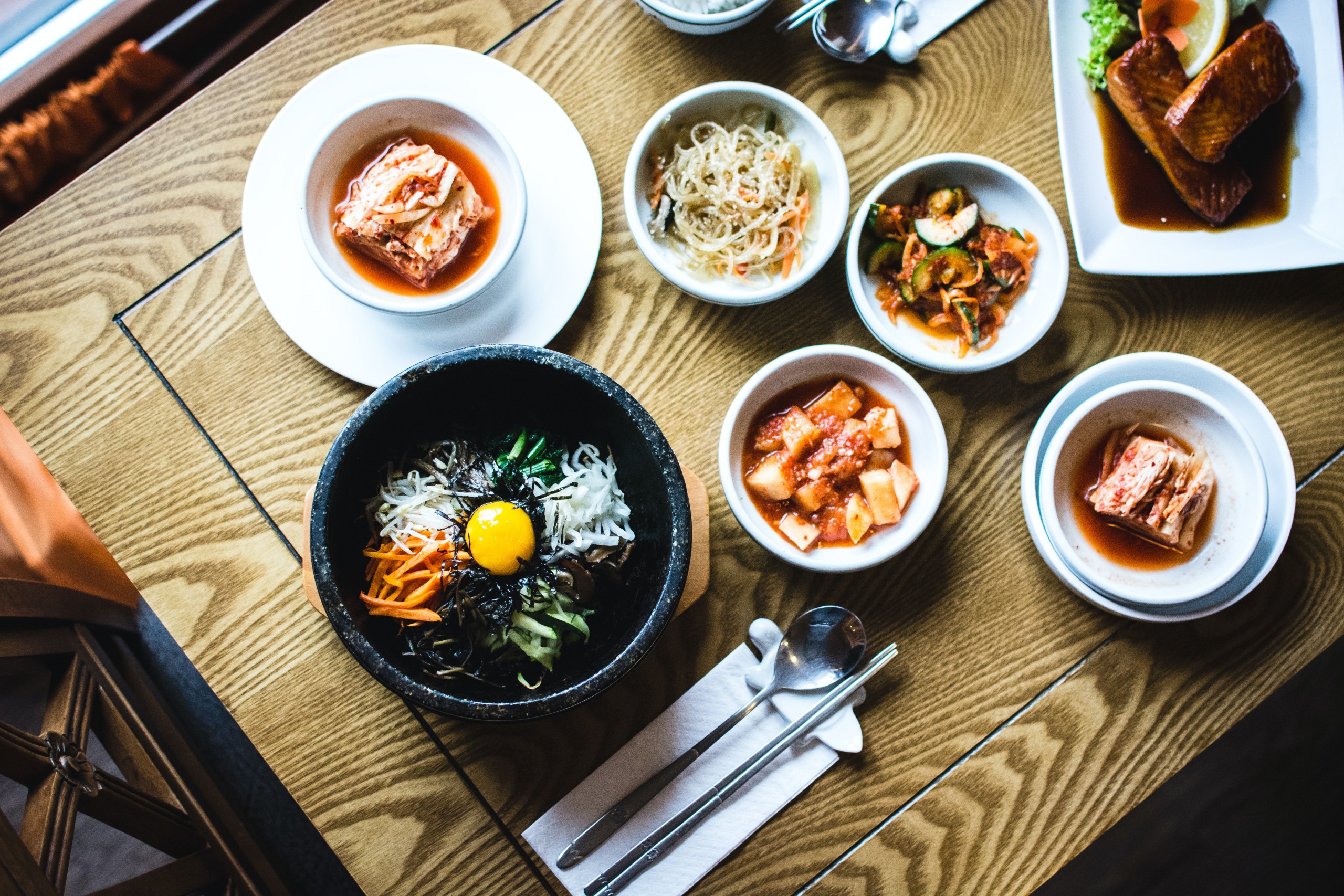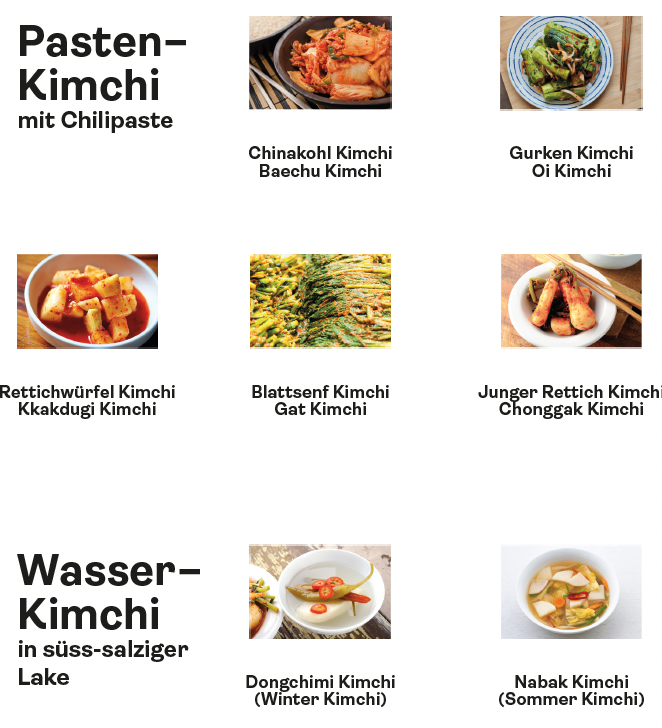Kimchi - a meal, a side dish, a medicine or just a hype?
What is Kimchi?
While in the West kimchi is often equated with cabbage kimchi, hundreds of different
types of kimchi exist in Korea. Many different vegetables or combinations of vegeta- bles are made into kimchi.
There are also two main categories of kimchi: kimchi, which is fermented with a red
chilli paste, and water kimchi, which is fermented with a brine similar to what we do
in the West. The types of kimchi vary according to the part of the country, the season,
the technique and the duration of fermentation.
Kimchi is eaten plain as a side dish with meals, but it is also used in cooking; pancakes,
stews and fried rice are examples. Below you can see photos of some types of kimchi.
South Korea consumes almost 2 million tonnes of kimchi per year (36kg per capita).
How old is Kimchi?
According to a historical record, chopped cucumbers were already being fermented 3,000 years ago. The
kimchi which is well known in the West, i.e. the one made from Chinese cabbage, dates back to ancient
times and is around 2,000 years old. It is unclear at what point chilli powder began to be added to kimchi;some sources say that this first happened when chil- li peppers were introduced into Korea around 1600 a.d., but a scientific discussion paper argues that Ko- rea cultivated its own red pepper plant long before that, and this spice has therefore been added to kim- chi for much longer.
Kimchi in the Vietnam War
South Korean President Park Chung-hee told US President Lyndon B. Johnson that kimchi was „vital to the morale of Korean troops“. However, this endeavor would cost US $3-4 million annually. On 14 March 1967,South Korean Prime Minister Chun Il-kwon visited Johnson at the White House to reiterate the importance of a steady supply of kimchi. At the end of 1967, the two presidents met in Canberra where Johnson reported to Park that the kimchi would arrive in the new year and that „the bureaucracy in Washington gave him more trouble about the kimchi than about the war in Vietnam.“
Kimchi as a cultural asset
Production and consumption
Many South Koreans now consume industrially produced kimchi; 38% of this is imported from China. The most popular kimchi in South Korea is Baechu Kimchi (Chinese cabbage kimchi) with 70% market share, followed by Kkaktugi Kimchi (radish kimchi), Dongchimi Kimchi (radish-water kimchi) and Chonggak Kimchi(kimchi made from a small type of radish).
Kimchi and its health aspects
Kimchi is praised around the world for its health benefits. In 2006, Kimchi was named one of the top five healthiest foods in the world by the internationally renowned Health Magazine.
These health benefits result from the use of raw materials with high nutritional value and the beneficial bacteria that drive fermentation.
Beneficial bacteria
It is well known that kimchi contains beneficial bacteria. The result: from Chinese cabbage it is the lactic acid bacteria of the genera Leuconostoc, Weissella and Lactobacillus, from garlic it is mainly Weissella bacteria. Ginger and chilli peppers do not produce any bacterial activity. The above-mentioned lactic acid bacteria are considered beneficial bacteria.
Nutrients
The two most commonly used kimchi ingredients, Chinese cabbage and radish, contain a range of important nutrients, from vitamins to amino acids, minerals and dietary fibre. The other ingredients used, such as garlic, ginger and red pepper or chilli powder, are also extremely rich in nutrients.
Kimchi as a medicine against flu viruses?
The lactic acid bacteria, green onions and ginger contained in kimchi serve as natural antiviral agents. They are highly effective in preventing influenza. Kimchi has the
greatest antiviral benefit when it is at its most delicious (3-7 days after day of production).
Quote: „We concluded that bioactive compounds of lactic acid bacteria produced by
kimchi fermentation serve as antiviral agents by affecting the surface of the viral
membrane or activating the mobilisation of immune cells immediately.“
Is Kimchi a beneficial diet?
Korea has developed a unique food culture over the millennia; in recent years, there has been a surge of interest in Korean food, especially for its health benefits.

The composition of a Korean meal
Korean meals have historically always been served with bap (boiled rice), kuk (a dish
containing broth, i.e. stew or soup), kimchi and banchan (side dishes). Side dishes also
include jang (fermented sauces and pastes) and namul (edible grasses and leaves). All dishes are eaten at the same time and not one after the other. Since traditionally baking or frying were not common cooking methods, Koreans tended to use fermenting, boiling, blanching, seasoning and pickling.
Kimchi is served with every meal?
Chinese cabbage kimchi is eaten raw in Korea when it has reached the ideal degree of ripeness: at this point it is fermented but not yet too sour. Like other fermented vegetables, raw kimchi not only provides many nutrients, but also live beneficial bacteria.
Chinese cabbage kimchi is used in Korea for cooking when it becomes too sour. Koreans do not like kimchi that is too sour
Did you know that there are over 100 different types of kimchi in Korea alone?
Here are a few examples:


